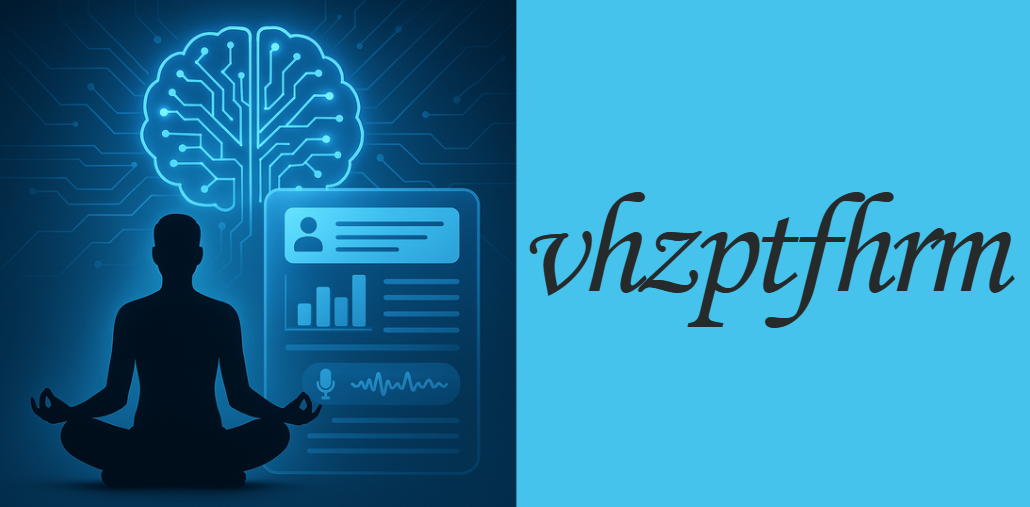Harness the Power of vhzptfhrm for Smarter Workflows and Well‑Being
At its heart, vhzptfhrm is a philosophy and technology framework designed to harmonize human intention with cutting‑edge AI. By weaving together mindful work practices and real‑time machine learning, it empowers individuals and organizations to achieve sustained focus, deeper creativity, and scalable solutions.
In this guide, you will explore the origins of vhzptfhrm, understand its technical backbone, and learn practical steps for adoption—whether you’re leading a global enterprise or embarking on a solo project.
Philosophical Foundations
The roots of vhzptfhrm lie in ancient mindfulness traditions that emphasize presence, purpose, and patience. Rather than rushing from task to task, practitioners are invited to engage in a “Silence‑Pause‑Progress” cycle. This approach begins with a moment of stillness to clear the mind, followed by intentional planning, and then steady execution without forcing outcomes.
Origins in Mindfulness
Drawing inspiration from meditative practices, vhzptfhrm teaches that true innovation often emerges when the mind is calm yet alert. Early adopters found that pausing before action reduced errors, heightened creativity, and fostered a sense of flow.
The Silence‑Pause‑Progress Cycle
- Silence: A brief interval of reflection to observe thoughts and set priorities.
- Pause: Deliberate planning of next steps, aligning actions with core values.
- Progress: Focused work, free from distractions, with periodic micro‑breaks for recalibration.
By cycling through these stages, teams report higher engagement and less burnout, transforming hectic schedules into sustainable rhythms.
Technical Architecture and Core Components
Beyond its philosophical underpinnings, vhzptfhrm boasts a robust, modular architecture that adapts to diverse workloads. Its design balances cloud scalability with on‑device responsiveness, ensuring smooth performance whether you’re processing millions of records or running a field‑based application.
Data Ingestion and Preprocessing
Data streams—voice recordings, text inputs, or sensor feeds—enter through a flexible ingestion layer. Here, noise reduction algorithms and language‑detection modules prepare raw inputs for deeper analysis. This preprocessing ensures that downstream models receive clean, structured data.
Machine‑Learning Models
At the core of vhzptfhrm lies a suite of models that range from Natural Language Understanding (NLU) to predictive analytics. These models continuously learn from user interactions, refining their accuracy over time. Custom training pipelines allow organizations to inject domain‑specific knowledge, further boosting relevance.
Real‑Time Adaptation
A key differentiator is the adaptive feedback loop. As users engage—whether through voice commands or text queries—the system fine‑tunes its responses on the fly. This dynamic learning ensures that over successive sessions, interactions become more personalized and efficient.
Scalability
Engineered for the cloud, vhzptfhrm can elastically scale to meet peak demands. Meanwhile, lightweight SDKs enable on‑device inference for latency‑sensitive applications, such as wearable devices or remote kiosks. This hybrid approach guarantees both high throughput and real‑time responsiveness.
Key Features and Functionality
vhzptfhrm offers a suite of capabilities that span voice processing, customization, and integration:
- Adaptive conversational AI that retains context across sessions
- Custom voice and avatar marketplace for branded experiences
- Enterprise‑grade security with end‑to‑end encryption
- Ready‑made plugins for CRM, eLearning platforms, and robotics
These features come together to form a cohesive ecosystem where voice‑enabled interfaces, data analytics, and secure collaboration tools coexist seamlessly.
Implementation Strategies
Deploying vhzptfhrm in your environment involves careful planning and iterative testing. Begin by identifying your primary use cases—be it customer support, content production, or mindfulness coaching. From there, follow a structured approach:
- Assessment: Map out existing workflows and data sources.
- Onboarding: Install SDKs, configure API keys, and run initial sandbox tests.
- Customization: Train custom vocabularies or voice models using your own datasets.
- Monitoring: Set up dashboards to track latency, accuracy, and user satisfaction.
By treating each phase as a learning opportunity, you can refine configurations and achieve a smooth transition from pilot to full production.
Real‑World Use Cases
Organizations across sectors have leveraged vhzptfhrm to solve pressing challenges. The table below highlights a few illustrative examples:
| Industry | Challenge | vhzptfhrm Solution | Outcome |
|---|---|---|---|
| Healthcare | High call‑center volume for symptom triage | AI‑powered voice assistants for preliminary intake | 30% reduction in wait times |
| Finance | Fraud detection and personalized advisory | Predictive analytics with real‑time alerts | 25% fewer false positives |
| Media & eLearning | Multi‑language transcription and narration | Automated pipelines for transcription and TTS | 40% faster content turnaround |
| Well‑being | Stress management and mindfulness engagement | Guided voice exercises with adaptive pacing | 50% increase in daily active users |
These case studies demonstrate not only technical efficacy but also measurable improvements in user experience and operational efficiency.
Comparative Analysis
When placed side‑by‑side with other AI platforms, vhzptfhrm stands out for its fusion of mindful design and adaptive intelligence. The comparison below underscores key differentiators:
| Feature | vhzptfhrm | Competitor A | Competitor B |
|---|---|---|---|
| Contextual Adaptation | Real‑time, session‑wide | Limited to single query | Batch updates only |
| Custom Voice Marketplace | Extensive library + studio | Basic voices only | No marketplace |
| On‑Device SDK | Full feature parity | Reduced functionality | N/A |
| Security Certifications | ISO 27001, SOC 2 Type II | SOC 2 Type I | ISO 9001 |
This analysis reveals how vhzptfhrm delivers a unique blend of customization, security, and continuous learning that others struggle to match.
Security, Compliance & Trust
Data protection is baked into every layer of vhzptfhrm. All inputs and outputs are encrypted both at rest and in transit, while role‑based access controls ensure that only authorized users can view sensitive information.
Annual third‑party audits and compliance with GDPR, HIPAA, and SOC 2 Type II standards reinforce organizational confidence. For industries with stringent regulations, private‑cloud or on‑premises deployments are also available.
Community, Resources & Support
A vibrant ecosystem surrounds vhzptfhrm, offering extensive learning and support channels. The official knowledge base houses tutorials, API references, and best‑practice guides. Meanwhile, community forums and dedicated Slack/Discord channels provide spaces for peer‑to‑peer assistance.
Live chat, email, and phone support ensure that critical issues receive prompt attention. Regular webinars and certification programs help users deepen their expertise and stay updated on new features.
Future Roadmap & Innovations
Looking ahead, vhzptfhrm plans to introduce multimodal AI that seamlessly blends voice, text, and visual inputs. Expanded avatar customization will let brands craft hyper‑realistic spokespersons, while partnerships with leading research institutions will drive advances in ethical AI.
Open beta programs will invite community feedback, ensuring that the platform evolves in alignment with real‑world needs.
Frequently Asked Questions
What pricing plans does vhzptfhrm offer, and can they be tailored to my organization’s needs?
vhzptfhrm provides a flexible pricing structure designed to suit projects of all sizes. You can choose between a pay‑as‑you‑go model—where you’re billed only for the compute time and features you consume—and tiered subscriptions that bundle usage quotas with premium support. For large enterprises or specialized deployments, custom plans are available, offering volume discounts, committed‑use reductions, and dedicated account management. This ensures you can align costs with your budgetary requirements and scale economically as your usage grows.
Which programming languages and platforms are supported by vhzptfhrm SDKs?
To make integration seamless, vhzptfhrm offers SDKs and client libraries for a wide array of development environments. Officially supported languages include Python, JavaScript (Node.js and browser), Java, C#, Swift, and Kotlin. In addition, there are Docker images and a command‑line interface (CLI) for scripting and batch operations. Community‑maintained bindings exist for languages like Ruby and Go, ensuring that teams can adopt vhzptfhrm without changing their preferred tech stack.
How does vhzptfhrm handle environments with intermittent or limited internet connectivity?
Understanding that some applications run in the field or in remote locations, vhzptfhrm provides an offline mode through its lightweight SDK. Core voice‑to‑text and text‑to‑voice models can be downloaded and cached locally on edge devices, enabling basic transcription and synthesis even when the network is down. Once connectivity is restored, the system synchronizes logs and usage data with the cloud for centralized monitoring and billing, ensuring uninterrupted functionality without data loss.
What accessibility standards does vhzptfhrm adhere to for inclusive user experiences?
Accessibility is a key consideration in vhzptfhrm’s design. The web dashboard and developer portal comply with WCAG 2.1 Level AA guidelines, providing features such as keyboard‑only navigation, appropriate ARIA roles, and high‑contrast modes. For generated outputs, vhzptfhrm automatically produces timed transcripts and closed‑caption files (e.g., WebVTT), making audio content accessible to users who are deaf or hard of hearing. These measures help ensure your voice‑enabled applications meet legal and ethical accessibility requirements.
Can vhzptfhrm integrate with legacy enterprise systems and databases?
Yes, vhzptfhrm is built for interoperability. Beyond its RESTful API, it supports SOAP‑based web services, ODBC/JDBC connectors for direct database access, and message‑queue integrations (e.g., RabbitMQ, Kafka) for event‑driven architectures. Pre‑built adapters facilitate connections to common ERPs and CRM systems, while a flexible ETL framework lets you map and transform data between vhzptfhrm and on‑premises databases. This ensures you can embed advanced voice and AI capabilities without overhauling your existing IT landscape.
Conclusion
By blending mindful work rhythms with an adaptive AI backbone, vhzptfhrm offers a transformative approach to productivity and innovation. Whether you’re aiming to streamline customer interactions, accelerate content creation, or cultivate team well‑being, this framework provides the tools and insights you need. Embrace vhzptfhrm to unlock new levels of focus, creativity, and growth—today and into the future.
Read more
Posts Titaniumshare: The Ultimate Comprehensive Guide to Fast, Secure & Seamless File Sharing
The Ultimate Guide to Financial Updates Aggr8Finance: Real-Time Insights, Tools & Strategies
Comprehensive Guide to commissione medica locale via boito 2 monza
Ultimate Guide to insights from tatasec.org – Comprehensive Financial, Business, and Tech Strategies






